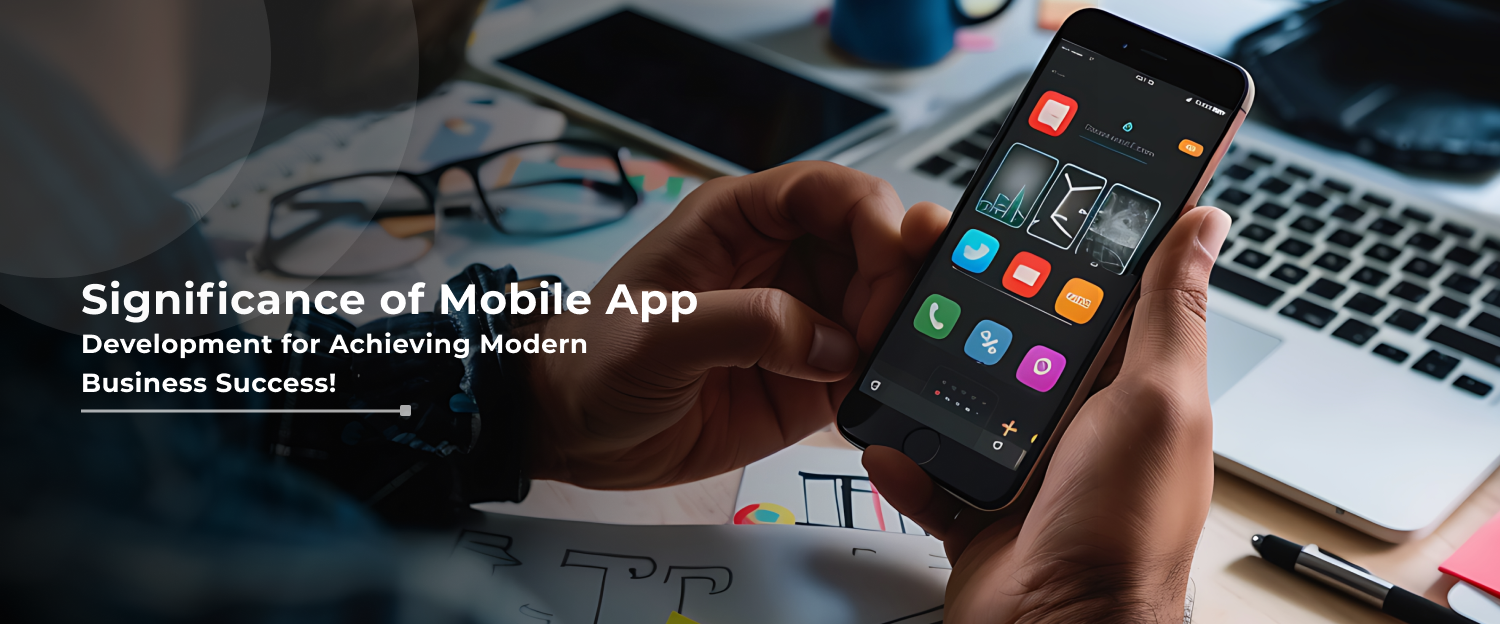Hey! Lets Talk about your project
We’ll contact you within a couple of hours to schedule a meeting to discuss your goals.
Mobile App Success in 2026: 15 Proven Strategies That Actually Work
Posted on : 13 November, 2025
If there is one truth about the app market in 2026, it’s this: users have zero patience for apps that waste their time.
Most of us have downloaded apps that felt bold and exciting at first glance… only to delete them 48 hours later. Maybe the design was confusing. Maybe it ran slow. Maybe it promised more than it delivered. Whatever the case, the uninstall button has never been easier to tap.
So how do some apps break through and stay on people’s home screens for months or years?
Not luck. Not magic. Strong, thoughtful execution.
After years of working in mobile app development, watching launches succeed and fail, and helping teams build and rebuild products, I’ve seen patterns repeat themselves. And the apps that thrive in 2026 are the ones built with intention, empathy, and discipline.
Below are 15 proven strategies that reflect how real users behave now—not how we wish they behaved.
1. Start With a Real Problem, Not Just an Idea
The most common mistake I see with new apps is this:
“I have a great idea.”
The truth is, ideas are easy. Problems are what matter.
Every successful app starts by answering a real need:
- People struggle to stay fit
- People get overwhelmed by budgeting
- People want to learn a language on the go
The most powerful opening question in app development is:
“Whose life is going to get easier because of this?”
If you can’t answer that clearly, press pause. Do the research. Talk to potential users. Read app store reviews of similar apps — users will tell you exactly what’s missing.
2. Define Your Core Value in One Sentence
Users should understand the point of your app within 10 seconds of opening it.
Examples:
- “Track your spending without spreadsheets.”
- “Daily workout plans designed just for your level.”
- “Make grocery shopping faster and easier.”
This is your value proposition, and it's what keeps users from bouncing instantly. If you can’t explain your app simply, users won’t stick around to figure it out.
3. Prioritize UI/UX Like It’s Your Product’s Reputation (Because It Is)

UI/UX isn’t “making the app look nice.” It’s making the app feel natural in the user’s hands.
App UI/UX design tips that still work every time:
- Don’t make the user think.
- Reduce steps required to complete key actions.
- Keep navigation obvious, not clever.
- Make the onboarding feel like a friendly guide, not a tutorial.
Your app should feel like it already knows how the user prefers to move.
4. Cross-Platform vs Native Apps: Choose On Purpose
This decision affects cost, performance, and long-term scalability.
| Option | Best For | Strengths | Trade-offs |
|---|---|---|---|
| Cross-Platform (e.g., Flutter, React Native) | Startups & fast launch | Shared codebase, faster updates | Slightly lower performance for complex apps |
| Native (iOS/Android separately) | Performance-heavy apps | Smoothest performance, full device access | Costs more and takes more time |
If your app is early-stage? Cross-platform is usually enough. If your app is graphics-heavy or needs deep OS integration? Go native.
This is how smart founders control budget without cutting future potential.
5. Performance Matters More Than Aesthetic Flair
A beautiful app that lags is like a fancy car with no engine.
Users delete apps for:
- Slow loading screens
- Laggy animations
- Freezes or crashes
- Heavy battery usage
App performance optimization tips:
- Test on older devices, not just your newest phone.
- Compress media assets.
- Limit background tasks.
- Cache intelligently to minimize data load.
A fast app feels premium, even if the design is simple.
6. Build an MVP First, Not the “Dream Version”
Your first version should solve one problem exceptionally well, not five problems poorly.
This is where many founders burn time and money.
Launch the smallest valuable version. Then watch what users ask for — they will tell you what matters. They always do.
Building with real feedback is app development best practices 101.
7. Onboarding Determines Whether Users Stay or Go
The first minute matters more than the first month. The goal of onboarding is not teaching — it’s reassuring.
You want the user to feel: “This is simple. I know what to do. This will help me.”
Effective onboarding techniques:
- Simple tooltips
- Quick explainer animations
- Skip buttons
- No long registration screens unless necessary
Give value before asking for commitment.
8. Build for Growth Before You Need Growth
Scalability is not a luxury. It’s preparation.
- Use cloud platforms that scale automatically
- Keep code modular
- Design data flows for speed
Growing should feel like acceleration, not collapse.
9. Personalization Boosts Retention Naturally
The apps people stick with are the ones that feel tailored to them.
Examples:
- Suggested workouts based on past progress
- News feed based on reading behavior
- Timely reminders based on habits
Personalization is not manipulation. It’s respect.
10. Use Gamification Thoughtfully
Gamification works when it supports a goal, not distracts from it.
Good use:
- Exercise streaks
- Skill badges in language learning
- Points for healthy habits
Bad use:
- Rewards that mean nothing
- Loud notifications
- Fake urgency
The objective is to make progress feel visible and encouraging.
11. Retention > Downloads

Downloads are vanity. Retention is survival.
Effective app user retention strategies include:
- Push notifications tailored, not generic
- New content or features at thoughtful intervals
- In-app celebrations when users achieve progress
Retention is emotional. People return to apps that feel supportive.
12. Security and Privacy Are Brand Trust
Users are more privacy-aware in 2026. They want to know:
- What you collect
- Why you collect it
- How you protect it
Clear, honest transparency is now a competitive advantage. Trust is a feature. And it’s one of the most valuable ones.
13. Update Like Your App Is Alive (Because It Is)
Your app isn’t a “one and done” project. It’s something that grows and improves over time. And honestly, your users will tell you a lot — sometimes more than any internal meeting ever will.
Pay attention to app store reviews, quick feedback messages, and analytics. If people are stumbling in the same place or asking for the same feature, that’s your signal.
A comfortable update rhythm often looks like:
- Small fixes and polish: every 2–3 weeks
- Bigger updates or new features: every 2–3 months
These updates aren’t just about fixing bugs they show users that you care, you’re present, and you’re improving the experience bit by bit.
14. Monetization Should Respect the User Experience
You don’t need to trick users to make revenue. Choose a model based on your value:
- Freemium: Try first, pay to unlock depth
- Subscription: Ongoing value delivery
- One-time purchase: Simple tools
- Ads: Only when usage is high and casual
Good monetization feels fair.
15. Measure What Matters and Ignore Vanity Stats
Do not build based on gut feeling alone. Once your app is live, real user behavior will tell you what’s working and what needs attention. Analytics should guide every improvement, update, and feature decision.
Focus on the metrics that show genuine engagement:
- Retention Rate: Are users coming back after the first use?
- Daily/Monthly Active Users: How often is your app part of someone’s routine?
- Time Spent Per Session: Are users finding value, or leaving quickly?
- Drop-Off Points: Where do users get confused or lose interest?
Small, data-driven refinements compound over time. When you measure the right things, you make smarter decisions, reduce wasted development effort, and improve the overall user experience. Data isn’t just numbers it’s a conversation with your users. Listen to it.
Conclusion
Building a successful mobile app in 2026 isn’t just about having a clever concept. It’s about understanding real user behavior, focusing on strong UI/UX, choosing the right development approach, and committing to continuous improvement. When you take these steps seriously, your app becomes something users depend on, not just something they try once and forget.
If you’re looking for expert support, IPIX can help. As a leading IT Company in India, UAE & USA, IPIX specializes in mobile app development, UI/UX design, and long-term app performance optimization. The team has helped startups, enterprises and growing brands develop apps that stand out in crowded markets.
Whether you're deciding between cross-platform vs native apps, building your first MVP or improving app user retention, IPIX provides guidance backed by real experience and results.
If you’re ready to take your idea from concept to a polished, engaging app that users genuinely value:
→ Reach out to IPIX to discuss your project and start building with confidence. Your app has potential. Let’s make sure it reaches it.

































 Talk to our Expert
Talk to our Expert
